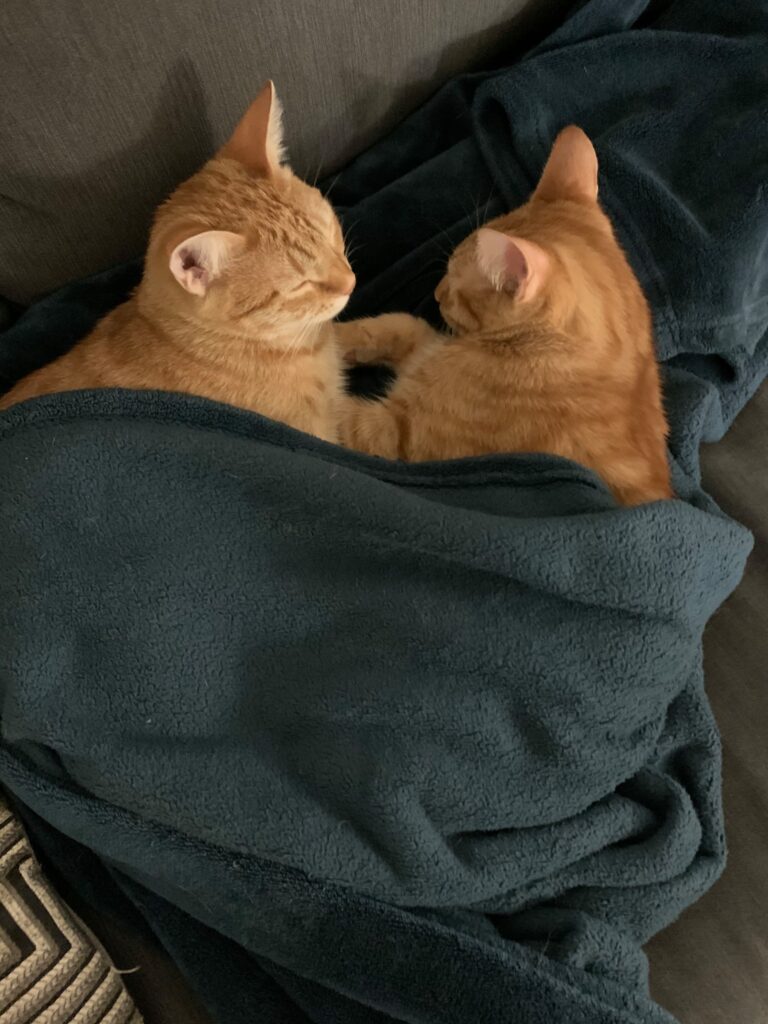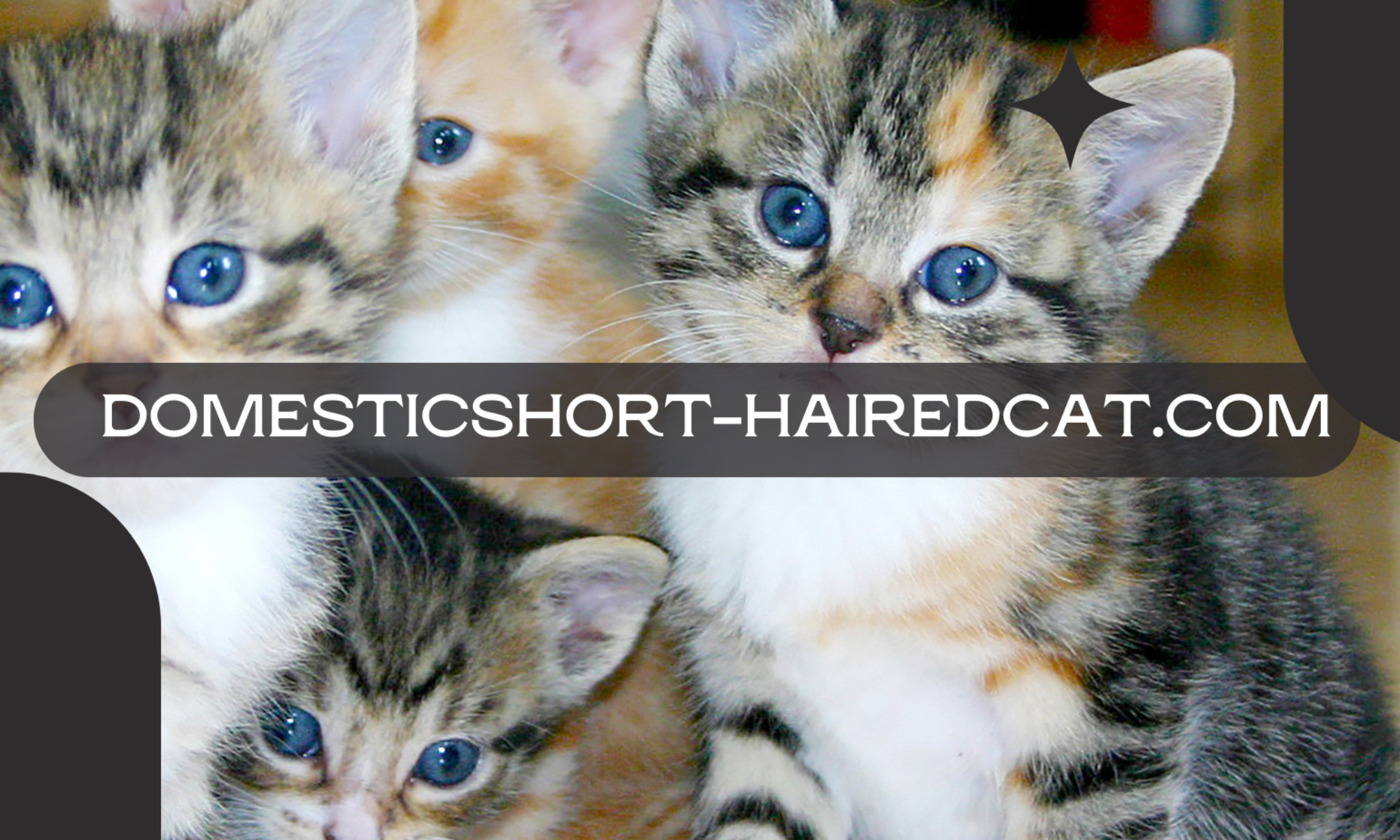For the longest time, being the mom of mutts myself, I thought that domestic short-haired cats were a breed and didn’t quite understand what the term meant until I did some research.
Domestic Short Haired cats, (or DSH for short), are one of the most common cat breeds in the world. They are often referred to as “mutts” of the cat world because they are not recognized as a specific breed.
However, this doesn’t make them any less special. In fact, their mixed heritage often gives them unique personalities and physical characteristics. (I jokingly tell my 18-pound Blaze that he is 1% Maine Coon!)

Basically, a domestic short-haired cat is any cat that has short hair and no specific breed ancestry and is domesticated.
Their coats can come in a variety of colors and patterns, and they can have different body types and facial features depending on their mixed heritage. They are typically medium-sized and muscular with short, sleek coats and round heads and paws.
DHS, or as I playfully call them mutts, make great pets for families and individuals who are looking for a loving and low-maintenance companion.
In fact, I’ve had cats for 23 years and they’ve helped me combat depression and anxiety.
For some fun, let’s explore their origins and history, physical characteristics, behavior and temperament, health and care, and adoption and ownership of these wonderful felines (who will beg you for treats starting at 6:00 am!)
Fun Points to Remember
- Domestic short-haired cats are not a specific breed but rather any cat with short hair and no specific breed ancestry.
- They come in a variety of colors, patterns, and body types.
- They’re known for their good health and longevity, making them great pets for families and individuals (my boy, Sspeedy, lived to be 19.5 years old!)
What Breeds Fall Under Domestic Shorthair Cats?
According to Hill’s Pet, these cats come in a wide range of colors, sizes, and statures, but they tend to be medium-sized and muscular with short, sleek coats and round heads and paws.
List of Breeds
Here are some of the most common breeds that fall under the Domestic Shorthair classification:
- Abyssinian
- American Curl
- American Shorthair
- American Wirehair
- Bengal
- Bombay
- British Shorthair
- Burmese
- Chartreux
- Cornish Rex
- Devon Rex
- Egyptian Mau
- Japanese Bobtail
- Korat
- Manx
- Ocicat
- Oriental Shorthair
- Russian Blue
- Scottish Fold
- Siamese
- Sphynx
- Tonkinese
It should be noted that the following are coat and colour patterns, not breed types, and any shorthaired cat can have one or the other coat pattern and colour:
- Tabby: This is a coat pattern that is common in Domestic Shorthair cats. Tabby cats have a distinctive “M” marking on their forehead and come in a variety of colors and patterns.
- Calico: Like Tabby, Calico is not a specific breed, but again, a coat pattern. Calico cats have a white coat with patches of orange and black. They are known for their independent and sassy personalities.
Evolution, Baby!
The evolution of the breed can be traced back to ancient times.
DSH cats are believed to have originated from African wildcats, which were domesticated by humans over 10,000 years ago in the Near East. These cats proved to be skilled hunters, providing invaluable help in controlling rodent populations in early human settlements.
Over time, these cats spread to different parts of the world, and their genetic makeup evolved based on the local environment and breeding practices. As a result, DSH cats can be found in different parts of the world and have different physical characteristics depending on their genetic background.
With all that said, check out the following articles to learn more about these amazing felines:
Responsible Ownership
Once you have adopted a Domestic Shorthair cat, it is important to be a responsible owner. This includes providing your cat with timely meals, regular veterinary care, plenty of play time, and a safe and comfortable living environment.
